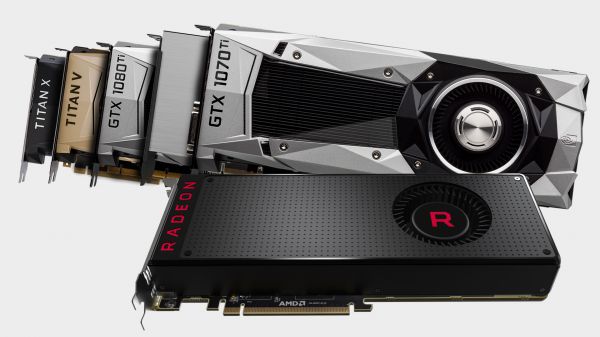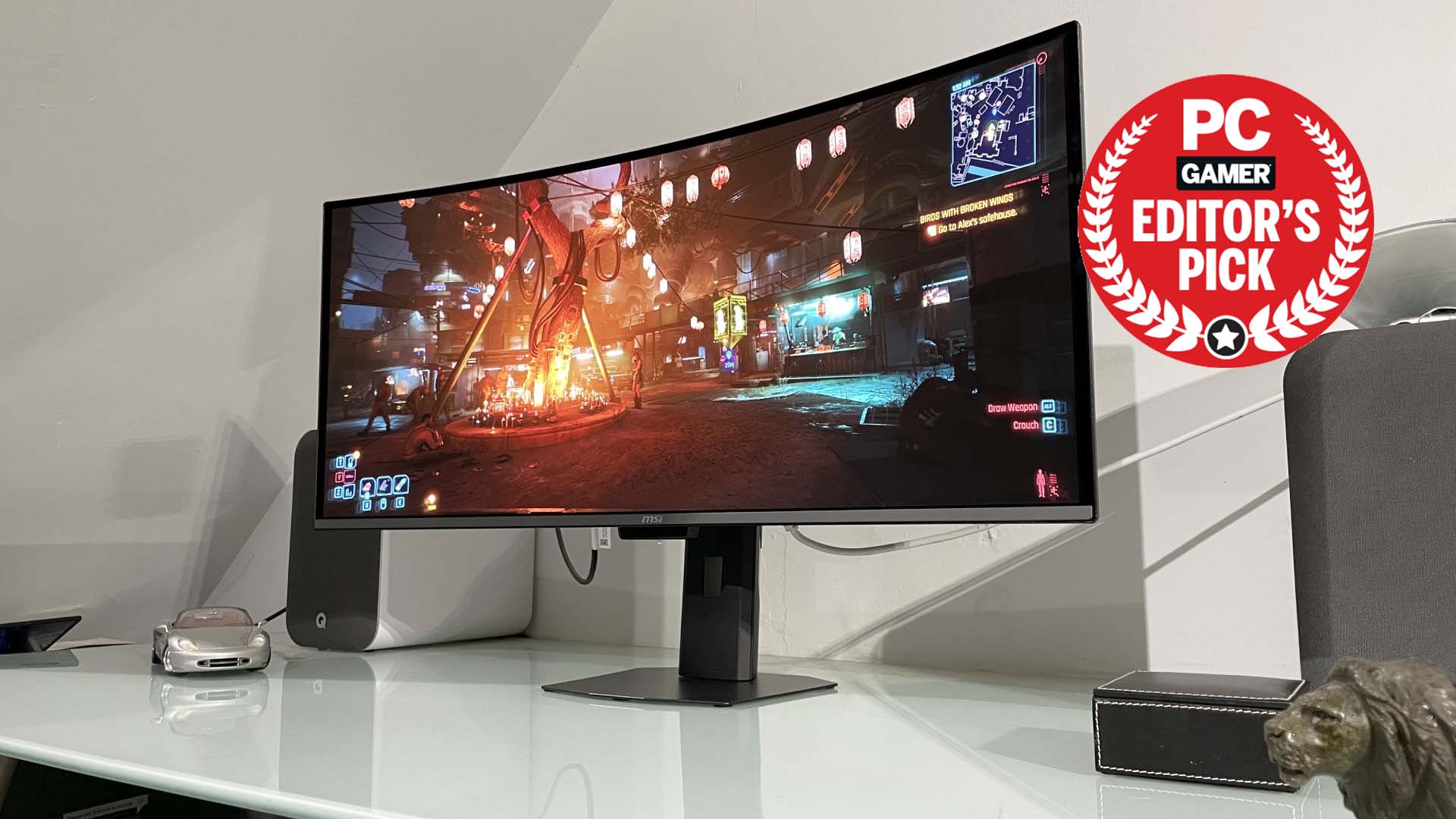GPU hierarchy 2020: Ranking the graphics cards you can buy
Our definitive ranking of all commercial graphics cards, from most to least powerful.

If you’re thinking about upgrading your GPU, you probably want to know where your current one stacks up—that’s where our graphics card hierarchy comes in. Whether you’re planning on buying one of the best graphics cards, or simply want to get something newer and faster, our list makes it very clear what constitutes a major upgrade or a minor one. You'll also want to think about the rest of your system: what's the best CPU for gaming, what about AMD vs Intel CPUs, and do you have a sufficiently large SSD for gaming?
It’s harder than ever to know how cards fit into the history and evolution of the modern GPU. Nvidia now has three versions of its 20-series graphics cards—20XX, 20XX Super, and 20XX Ti—plus there are a whole range of low-mid range cards that don’t fit the naming convention like the 1650 and 1660. Meanwhile, AMD’s different card lines all have their own naming conventions. It’s easy to tell that a RX 590 is better than an RX 580, but how do those compare to a Vega 64? Or a Radeon VII!? There’s a roman numeral in there! How does that help anyone?
Our graphics card rankings are very clear and very simple. We start with the most powerful card on the market and work our way down the list of cards that are currently available new from retailers. The rankings are based on framerate tests on a series of popular games performed by our staff, as well as external market research. Also, it’s important to note that the ranking are based on stock first-party hardware from AMD and Nvidia. The specs may vary, depending on if you buy one of these or a variant made by GPU manufacturers like EVGA, MSI, or ASUS.

1. Nvidia GeForce RTX 2080 Ti
Boost Clock: 1635MHz | Memory: 11GB GDDR6 | CUDA Cores: 4352 | Memory Bandwidth: 616GB/s

2. Nvidia GeForce RTX 2080 Super
Boost Clock: 1815MHz | Memory: 8GB GDDR6 | CUDA Cores: 3072 | Memory Bandwidth: 496GB/s

3. Nvidia GeForce RTX 2080
Boost Clock: 1710MHz | Memory: 8GB GDDR6 | CUDA Cores: 2944 | Memory Bandwidth: 448GB/s

4. Nvidia GeForce RTX 2070 Super
Boost Clock: 1770MHz | Memory: 8GB GDDR6 | CUDA Cores: 2560 | Memory Bandwidth: 448GB/s

5. AMD Radeon VII
Boost Clock: 1750MHz | Memory: 16GB HMB2 | Stream Processors: 3840 | Memory Bandwidth: 1000GB/s

6. AMD Radeon RX 5700 XT
Boost Clock: 1905MHz | Memory: 8GB GDDR6 | Stream Processors: 2560 | Memory Bandwidth: 448GB/s

7. Nvidia GeForce RTX 2070
Boost Clock: 1620MHz | Memory: 8GB GDDR6 | CUDA Cores: 2304 | Memory Bandwidth: 448GB/s

8. Nvidia GeForce RTX 2060 Super
Boost Clock: 1650MHz | Memory: 8GB GDDR6 | CUDA Cores: 2176 | Memory Bandwidth: 448GB/s

9. AMD Radeon RX 5700
Boost Clock: 1725MHz | Memory: 8GB GDDR6 | Stream Processors: 2304 | Memory Bandwidth: 448GB/s

10. AMD Radeon RX Vega 64
Boost Clock: 1546MHz | Memory: 8GB HBM2 | Steam Processors: 4096 | Memory Bandwidth: 484GB/s

11. Nvidia GeForce RTX 2060
Boost Clock: 1680MHz | Memory: 6GB GDDR6 | CUDA Cores: 1920 | Memory Bandwidth: 336GB/s

12. AMD Radeon RX Vega 56
Boost Clock: 1471MHz | Memory: 8GB HBM2 | Stream Processors: 3,584 | Memory Bandwidth: 410GB/s

13. Nvidia GeForce GTX 1660 Ti
Boost Clock: 1770MHz | Memory: 6GB GDDR5 | CUDA Cores: 1536 | Memory Bandwidth: 288GB/s

14. Nvidia GTX 1660 Super
Boost Clock: 1785MHz | Memory: 6GB GDDR5 | CUDA Cores: 1408 | Memory Bandwidth: 336GB/s

15. Nvidia GeForce GTX 1660
Boost Clock: 1785MHz | Memory: 6GB GDDR5 | CUDA Cores: 1408 | Memory Bandwidth: 192GB/s

16. AMD Radeon RX 590
Boost Clock: 1545MHz | Memory: 8GB GDDR5 | Steam Processors: 2,304 | Memory Bandwidth: 256GB/s

17. AMD Radeon RX 580 8GB
Boost Clock: 1340MHz | Memory: 8GB GDDR5 | Stream processors: 2,304 | Memory Bandwidth: 256GB/s

18. Nvidia GeForce GTX 1060 6GB
Boost Clock: 1708MHz | Memory: 6GB GDDR5 | CUDA Cores: 1280 | Memory Bandwidth: 192GB/s

19. Nvidia GeForce GTX 1060 3GB
Boost Clock: 1708MHz | Memory: 3GB GDDR5 | CUDA Cores: 1152 | Memory Bandwidth: 192GB/s

20. AMD Radeon RX 570 4GB
Boost Clock: 1244MHz | Memory: 4GB GDDR5 | Stream Processors: 1328 | Memory Bandwidth: 224GB/s

21. Nvidia GeForce GTX 1650
Boost Clock: 1665MHz | Memory: 4GB GDDR6 | CUDA Cores: 896 | Memory Bandwidth: 128GB/s

22. Nvidia GeForce GTX 1050 Ti
Boost Clock: 1392MHz | Memory: 4GB GDDR5 | CUDA Cores: 768 | Memory Bandwidth: 112GB/s

23. AMD Radeon RX 560 4GB
Boost Clock: 1275MHz | Memory: 4GB GDDR5 | Steam Processors: 1024 | Memory Bandwidth: 112GB/s

24. Nvidia GeForce GTX 1050
Boost Clock: 1455MHz | Memory: 2GB GDDR5 | CUDA Cores: 640 | Memory Bandwidth: 112GB/s

25. AMD Radeon RX 550
Boost Clock: 1883MHz | Memory: 4GB GDDR5 | Steam Processors: 512 | Memory Bandwidth: 112GB/s

26. Nvidia GeForce GT 1030
Boost Clock: 1468MHz | Memory: 2GB GDDR5 | CUDA Cores: 384 | Memory Bandwidth: 48GB/s

27. AMD Radeon Vega 8 (Ryzen 3 2200G)
Boost Clock: 1100MHz | Memory: Shared system RAM | Stream Processors: 512 | Memory Bandwidth: 34.1-51.2GB/s (shared)

So there you have it—all the graphics cards you can buy right now, (roughly) ranked by performance. If you're interested in more detailed comparisons, check out our best graphics cards guide. We also have a frequently-updated list of cheap graphics cards deals.
If you have an older GPU and want to know where it sits in the list, here's the quick rundown of Nvidia's 10-series cards. The GTX 1080 Ti ranks just below the 2080, but ahead of the Radeon VII. The GTX 1080 comes in just ahead of the RX Vega 64, with the GTX 1070 Ti effectively tied with the Vega 64 (just a hair slower). The GTX 1070 meanwhile comes in about 5-8 percent below the RX Vega 56, a few percent ahead of the GTX 1660 Ti.
Going back another generation to Nvidia's 900-series and AMD's R9 series, things get a bit messier. The GTX 980 Ti is about 10 percent below the GTX 1070, and the R9 Fury X is about 5-10 percent slower than the 980 Ti. The R9 Fury and R9 Nano drop another 10-15 percent relative to the Fury X, with the Nano being very close to the GTX 980 in performance. The 980 also roughly matches the GTX 1060 6GB, along with the R9 390X. The R9 390 is a bit slower (5-10 percent), but thanks to its 8GB VRAM, it's 10-15 percent faster than the GTX 970. The even older R9 290X is basically a tie with the R9 390, with the R9 290 dropping 10 percent (basically tying the GTX 970). Finally, the R9 380 and 380X typically beat the GTX 1050 Ti, while Nvidia GTX 960 and 950 offer nearly the same performance as the GTX 1050 Ti and 1050, respectively. Anything below these cards is ripe for an upgrade.
Keep up to date with the most important stories and the best deals, as picked by the PC Gamer team.
Corbin is a tech journalist, software developer, and longtime PC Gamer freelance writer, currently based in North Carolina. He now focuses on the world of Android as a full-time writer at XDA-Developers. He plays a lot of Planet Coaster and Fallout and hosts a podcast all about forgotten stories from tech history.


